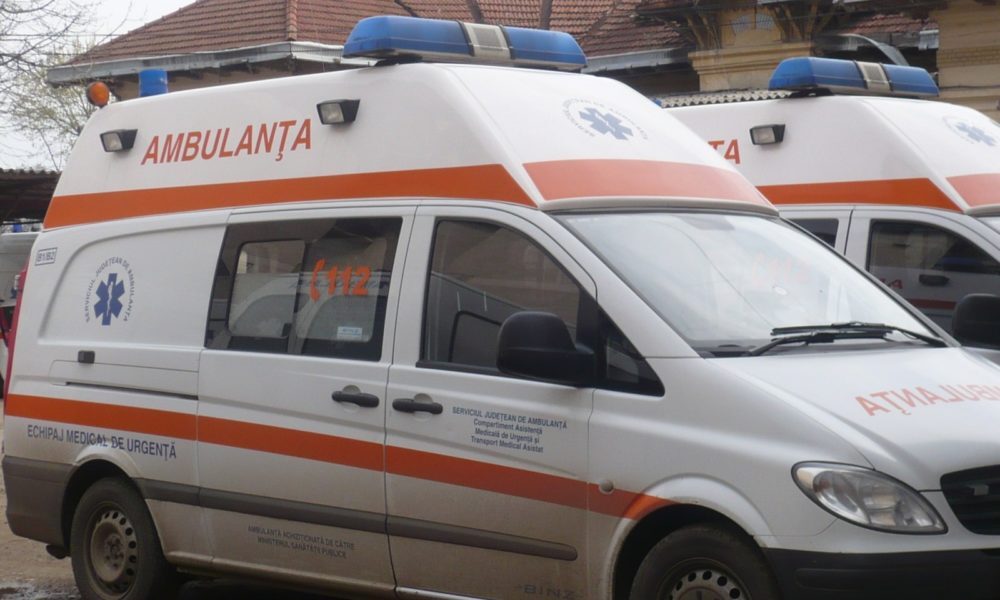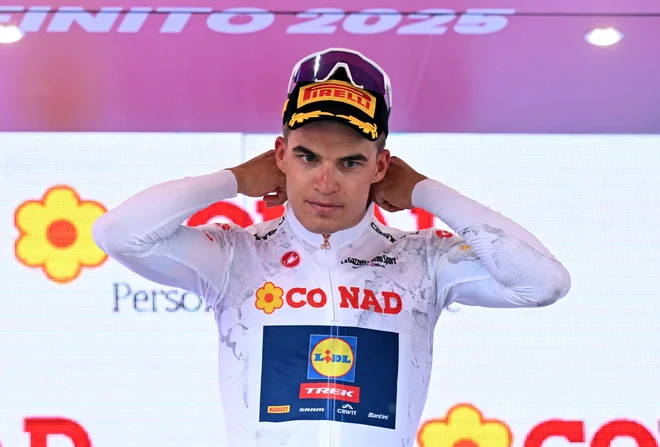Putin sends an adviser to Istanbul: for example, the main parties go into peace meeting
:format(webp)/s3/static.nrc.nl/images/gn4/stripped/data132088043-715056.jpg)
Is Putin coming, or is he not coming? For days, it remained unclear whether the Russian president would actually participate in peace consultation in Turkey after a direct invitation of the Ukrainian president Zensky. As the intended day, this Thursday, came closer, the consultation was scaled off.
In the course of Wednesday, a meeting between the Foreign Ministers became more likely than a tête-à-tête of the presidents. It was then reported that Minister Sergej Lavrov would not fly to Istanbul. On Wednesday evening, the American side said that Minister Marco Rubio and envoy Steve Witkoff will only go to Istanbul on Friday. Late in the evening, the Kremlin announced that political adviser and former cultural minister Vladimir Medinski is traveling to Istanbul on behalf of Putin.
Shortly after the 2022 invasion of the Wit-Russian border, Medinski led hasty and demolished negotiations with Ukraine. He will be flanked by the Viceministers of Foreign Affairs and Defense: Michaul Galzin and Aleksandr Fomin, together with the head of the Military Intelligence Service (Groe) Igor Kostjukov and a team of experts.
Zelensky himself traveled to Turkey a day before: not only for a consultation with Turkish President Erdogan in Ankara, but probably also to show Moscow, Washington and the rest of the world that it will not be on Ukraine. How do the various stakeholders enter into the discussions?
Ukraine
President Zensky is well aware of the crucial role that the American government can play in the complex search for peace between Russia and Ukraine. Washington is the only one to have the power to exert heavy influence on any discussions with economic sanctions on the one hand and arms deliveries.
Although Trump seems to have a strong preference to do business with Putin, Ukraine has scored important points in the struggle for the favor of the US government in recent weeks. At the end of April the bilateral raw material agreement between Washington and Kyiv signed.
A few weeks earlier, Ukraine already agreed unconditionally with an American proposal for a temporary ceasefire. The Kremlin has still not agreed and mainly sets requirements. Trump has already shown this several times to be irritated about Putin’s delay tactics. That was reinforced by the ongoing Russian attacks on the Ukrainian civilian population.
Zensky seems to feel the light change in mood in the White House flawlessly. With his surprising offer to start directly with Putin this week – and with Trump – Zelensky meets calls that both made last weekends.
The question is whether Putin had calculated that Zensky would respond so quickly and immediately. By traveling to Turkey and waiting on the spot to see if Putin possibly appears, Zensky puts the Russian president theatrical in front of the block. « If Putin does not come, it will look like a complete defeat for him, » said Zensky on Tuesday an interview of Libération. Zelensky has said before that he only wants to talk to Putin, if only because the president started the war, and the only one in Russia is who can make decisions.
Read also
Also read: Putin wants to ‘negotiate quickly’ with Ukraine, Zensky says after pressure from Trump is willing to meet him on Thursday in Istanbul
But Putin will not appear. He sends a lower delegation of advisers and sub -ministers, accompanied by a group of ‘experts’. They will re -confront Ukraine with numerous Russian requirements and ‘technical’ issues, ranging from the annexation of Ukrainian territory to the legitimacy of the government in KYIV and the demilitarization of the country desired by Moscow.
Needs little imagination to predict that Ukraine will not agree with that under any condition. Given the recent movements of Zensky, Ukraine will try to seek further support from the Trump government. On a diplomatic level, there is the big challenge for Zensky. Because if the US was indeed slowly turning towards Kyiv, then Zensky has already won a huge victory.
Russia
It is unlikely that Vladimir Putin has seriously considered one second to appear in Istanbul personally. Not only because the Russian president has to plan his international journeys cautiously due to the arrest warrant that the International Criminal Court issued against him in 2023. But sitting at the table with the man he has been accusing to represent a ‘Nazi regime’ for three years is not an option for Putin. Unless Trump would force him.
With his statement that he would personally wait in Istanbul, Zensky continued to continue the Russian president in the defensive last week. Putin has already been there, since European leaders were behind Zensky’s proposal last week for an immediate file of thirty days and threatened with additional sanctions. Last weekend Putin tried with a midnight statement save his position. By presenting « direct » conversations himself, he hoped to present himself in the eyes of Washington as a serious negotiator. In addition, he presented the conversations as a follow -up to negotiations in Istanbul in March 2022, where Ukraine was under great pressure to surrender after the invasion. That Putin decided to send Medinski to Istanbul to a crystal clear signal that he interprets this week’s Istanbul consultation as a continuation of the then negotiations.
For the announcement, days of unclear statements preceded what representation Russia would send. On Tuesday the choice seemed to have fallen on Kremlin negotiator Joeri Oesjakov, accompanied by Putin’s loyal foreign minister and difficult-Klussen-Knapper Sergej Lavrov. On Wednesday, however, Oesjakov told the Kremlin That the Russian delegation is not yet complete and is compiled on the basis of the ‘myriad of technical issues’, which wants to raise the Kremlin.
With the ‘light’ delegation, Putin shows that he hardly takes the negotiations seriously
With the ‘light’ delegation, Putin shows that he hardly takes the negotiations seriously, despite the increasing pressure from Washington. Analysts also do not expect Russia to make serious concessions, or that Russia will agree with the proposed cease-fire. Putin is expected to continue to focus on tackling the ‘root causes’ of the conflict and will continue to hammer on conditions regarding Ukraine’s sovereignty and safety cooperation with Western partners.
The Russian political analyst and former diplomat Aleksandr Baoenov sees a classic dilemma in the diplomatic bumbling, for which Stalin also saw himself. « Putin’s behavior (is) an attempt to find the narrow way between two ways to retain his profit: through violence, or through external legitimacy. » Under the previous American government there was little hope that the identification will come, but since Donald Trump has been revived that hope, ” written Baoenov in an opinion piece for Meduza. According to the outside world, Putin may have brought himself into a plight, the question is whether he sees it that way.
/s3/static.nrc.nl/images/gn4/stripped/data132241674-4750e9.jpg|https://images.nrc.nl/74QvFnCV4eSUjWZU0ilb5tsyOhM=/1920x/filters:no_upscale()/s3/static.nrc.nl/images/gn4/stripped/data132241674-4750e9.jpg|https://images.nrc.nl/47LDcJsu0ixWiDZQmzQMz7tHcgk=/5760x/filters:no_upscale()/s3/static.nrc.nl/images/gn4/stripped/data132241674-4750e9.jpg)
Photo Alexander Take / AP
United States
President Trump decided to attempt immediately at the start of his term to get Ukraine and Russia at the table. It turned out to be much more difficult than he prevented with his characteristic bravado.
The American approach seemed simple. As an indispensable ally for KYIV, the US has significantly more instruments to put pressure on Ukraine than to send Russia. So Team Trump first tried to move Zensky to compliance. With Ukrainian concessions in hand, an attempt could then be made to seduce Putin into a serious conversation.
The US went hard. Ukraine would never get all the lost area-about 20 percent of the country-back and NATO membership would not be part of an agreement. A possible file line should be monitored by European countries, not by the US. Because Zensky was not flexible enough to the taste of Trump and Vice President Vance, after a lot of bungel, it came to the unprecedented hard collision for the cameras in Trumps office in the White House.
Trump asked his real estate buddy Steve Witkoff to negotiate with Putin. The two spoke four times. The results of those conversations were, as far as is known, pro-Russian. It did not come to real negotiations or any Russian concession.
The European allies therefore repeatedly pointed out that Trump should not be kept on the line by Putin. Was it not a good idea to give him a deadline?
Read also
Read also: The mineral deal is signed, Trump agrees with first arms export to Ukraine
The US also saw the risk and began to increase the pressure on Russia in recent weeks. Trump had a good conversation with Zensky in Rome. The raw material deal was not the clamp contract that was still feared in the winter months. Russia demands too much, Vance said last week.
The US is clearly irritated that Putin does not seem to be prepared for real steps, but it is still unclear whether that also leads to serious pressure on Moscow, although the US is fiddled with heavy sanctions. At the same time, Zensky is very cooperative. This makes it more difficult for Trump to unilaterally shift the fault of a possible failure.
Europe
European leaders were initially shocked that the US made direct contact with Russia and Europe was not involved in the talks about the future of Ukraine. In the meantime, Europeans are concentrating on support for KYIV and working behind the scenes on a ‘warranty power’ who after a possible agreement must guarantee that Putin will not attack again. Last weekend European leaders made their appearance in Kyiv and tried to move Russia into a ceasefire of thirty days.
In the meantime, Europeans are carrying out sanctions against Russia. This week an agreement in principle was reached in the EU for a new sanction package, the seventeenth, which builds on earlier sanctions. The international sanctions have not forced Russia to his knees, but are a way for Europe to come to the table in the conversations about Ukraine. The US know that they need Europe to be able to promise serious sanction lighting, but all in all Europe still remains in a subordinate role.

:format(webp)/s3/static.nrc.nl/wp-content/uploads/2025/05/01143617/data131614008-2b51de.jpg)
/s3/static.nrc.nl/images/gn4/stripped/data132212782-3ba4bf.jpg|https://images.nrc.nl/yip-nyoepo5L8pWZcb9kr5h94_I=/1920x/filters:no_upscale()/s3/static.nrc.nl/images/gn4/stripped/data132212782-3ba4bf.jpg|https://images.nrc.nl/H9ad58w12QR-PDMb2YgP_t2WwlE=/5760x/filters:no_upscale()/s3/static.nrc.nl/images/gn4/stripped/data132212782-3ba4bf.jpg)
/s3/static.nrc.nl/wp-content/uploads/2025/05/15084056/IRAN-NUCLEAR-USA_67784844.jpg)
:format(jpeg):fill(f8f8f8,true)/s3/static.nrc.nl/images/gn4/data132270366-6377a5.png)




